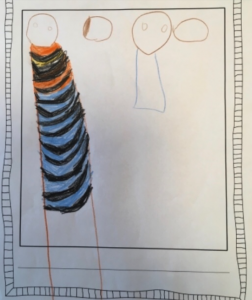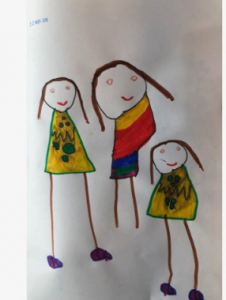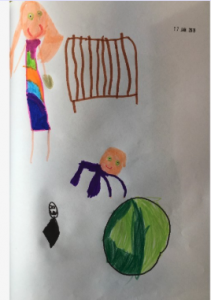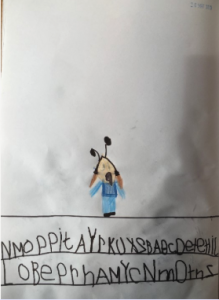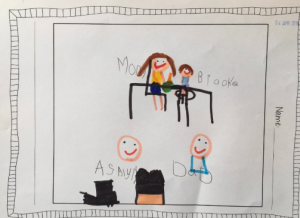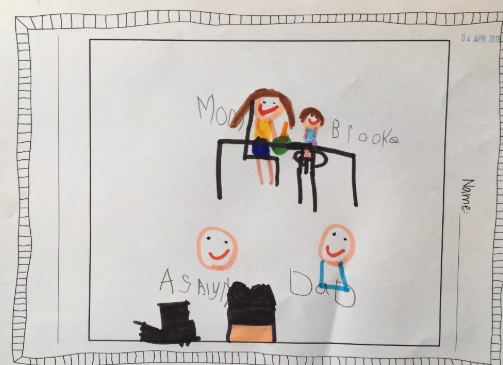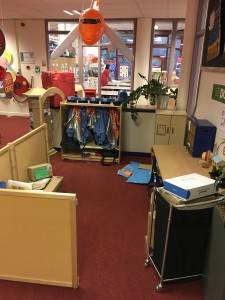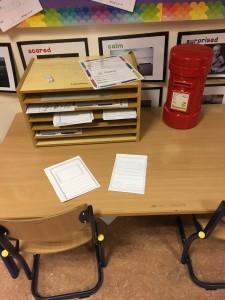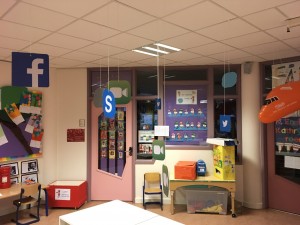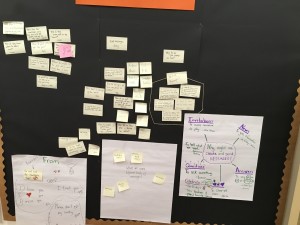Last week I was having one of those days where I was doubting a lot of what I believe that Kindergarten students can do. In hindsight, I realize that there were probably three things creating that doubt. It probably started with my own state, which was exhausted. Then, I was impatient. We were in week four of our #ibpyp unit of inquiry and I wanted to see more evidence of conceptual transfer. Finally, when I voiced my doubts, the response from some people was that I was probably aiming too high. I was ready to go hide in the book corner and surround myself Mo Willems’ pigeon when our guest artist, a parent of one of our students, arrived for her big lesson.
Conceptual Understanding Is Transferable
If you’ve read my recent posts, you know that our students are inquiring into how artists use their art to express emotions and ideas. You’ll also know that our key concepts are form and perspective. In hindsight, the unit has been going pretty well. Students have been exploring and discussing different forms within and outside of the discipline of art. They have been talking about the emotions and moods that they feel are represented in a piece of art. They have been acknowledging and appreciating each other’s differing perspectives. I realize now that I was looking for an opportunity for them to transfer all of this to a new and novel situation. The opportunity was still to come.
Bring In the Parent-Led Lesson
Our guest artist/Mom had been planning to share her expertise with us for a few weeks. She is a passionate artist who specializes in calligraphy. We were excited that our students would have the opportunity to be exposed to another art form, as well as to interact with an artist from our learning community. Our guest mom was understandably a bit nervous to share with a group of five-year-olds but felt confident that she had an idea that would keep our Kindergarteners engaged. From the perspective of a concept-based, PYP teacher, she had so much more than that.
The Perfect Provocations
Our guest artist set up the room with Kindergarten-friendly calligraphy tools. She had clearly put a lot of thought into providing authentic tools which were still developmentally appropriate for five-year-olds. There was a watercolor station with special “calligraphy” paint markers and there were stations set up with sets of color pencils, taped together to make multicolor calligraphy pens that had a wide grip. All stations had large sheets of plain paper, waiting for our students to transform them.
When the students entered the room, they saw their “atelier” set up and ready for them. They also saw that there would be a meeting on the carpet first. Our guest was waiting next to our screen, where she had a short slideshow to share with them.
The slideshow was powerful. The students were shown some images of calligraphy being used in environmental print around the neighborhood. They saw restaurant boards and signs on stores. Our guest asked our students to share their thoughts about the different signs. Students noticed that some of them looked happy or sad. They connected these feelings to the colors of the signs at first. One student pointed out that if you use red (see the photo below), it will make people angry. Our guest artist acknowledged this and then invited them to look deeper. “Have a look at the actual letters and how they seem to feel. Do they play a role?”
My teacher heart was bubbling over. Our guest was inviting our students to do precisely the type of slow and purposeful looking that we had been practicing for weeks. Sure enough, the students began focusing their attention on the form of the letters, the fonts if you will. A conversation ensued about how letters can feel happy or sad, silly or serious.
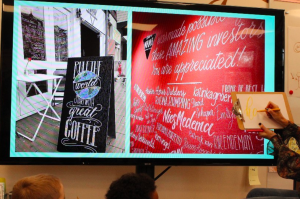
Our guest artist built on this by asking students which colors and styles they thought might express different emotions when creating art with letters. She demonstrated their ideas as they shared-silly would be yellow and swirly, for example.
Once a few examples were shared, the students were invited to visit the stations where they could express emotions by creating art with letters. One last thing before they went off as my teaching partner, with her lightening-quick instincts interjected. She asked the students to help us all remember which letters we had been learning and led them through a lightning-quick review, where they wrote some of those letters in the air or on the carpet.
Opportunity For Transfer
After our guest mom had packed up and gone in search of coffee, I realized how much our students had transferred. By sharing the environmental print with the students, our guest had given them the opportunity to transfer what they understood about the role of color, line, shape, and movement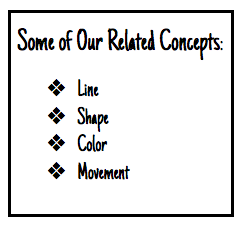 in fine art, to the role they play in advertising and other forms of print. Students were able to deepen their understanding of form and how the choices an artist makes creates what their art expresses. They also had yet another opportunity to explore their different perspectives on how they viewed a piece of art.
in fine art, to the role they play in advertising and other forms of print. Students were able to deepen their understanding of form and how the choices an artist makes creates what their art expresses. They also had yet another opportunity to explore their different perspectives on how they viewed a piece of art.
How lucky our students are to be a part of such a caring and sharing learning community. How lucky I was to have this opportunity to witness a fantastic example of how authentic parent involvement can enhance the learning in our classrooms. Even more, I am grateful for the reminder that even our youngest learners are capable of so much and how important it is that we continue to aim high for them. #yestheycan
